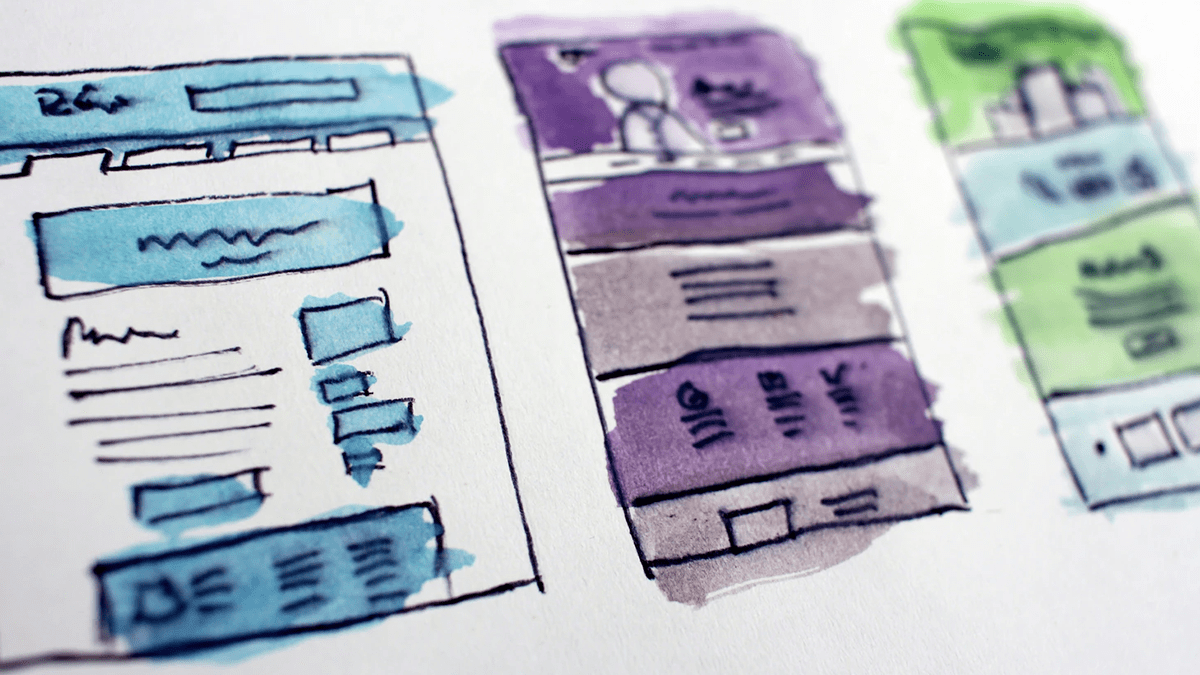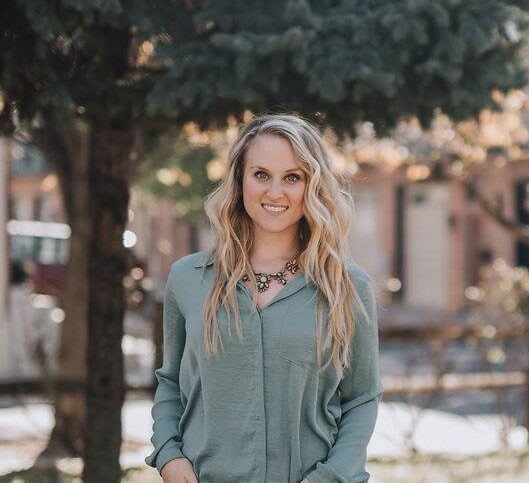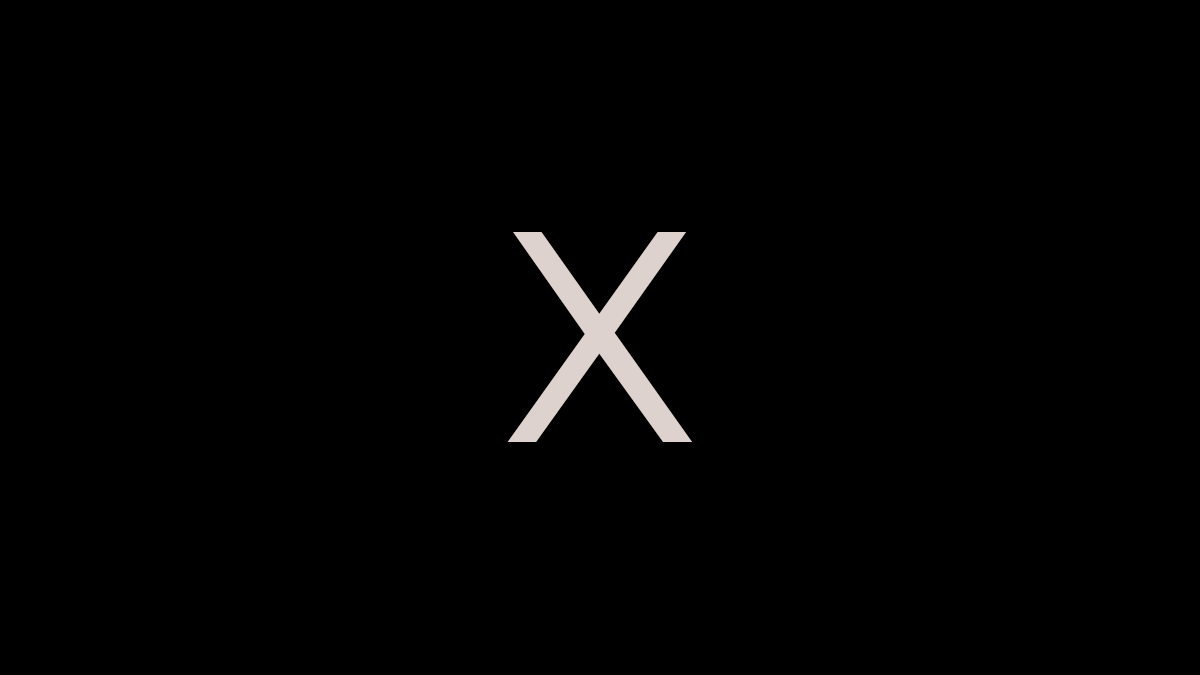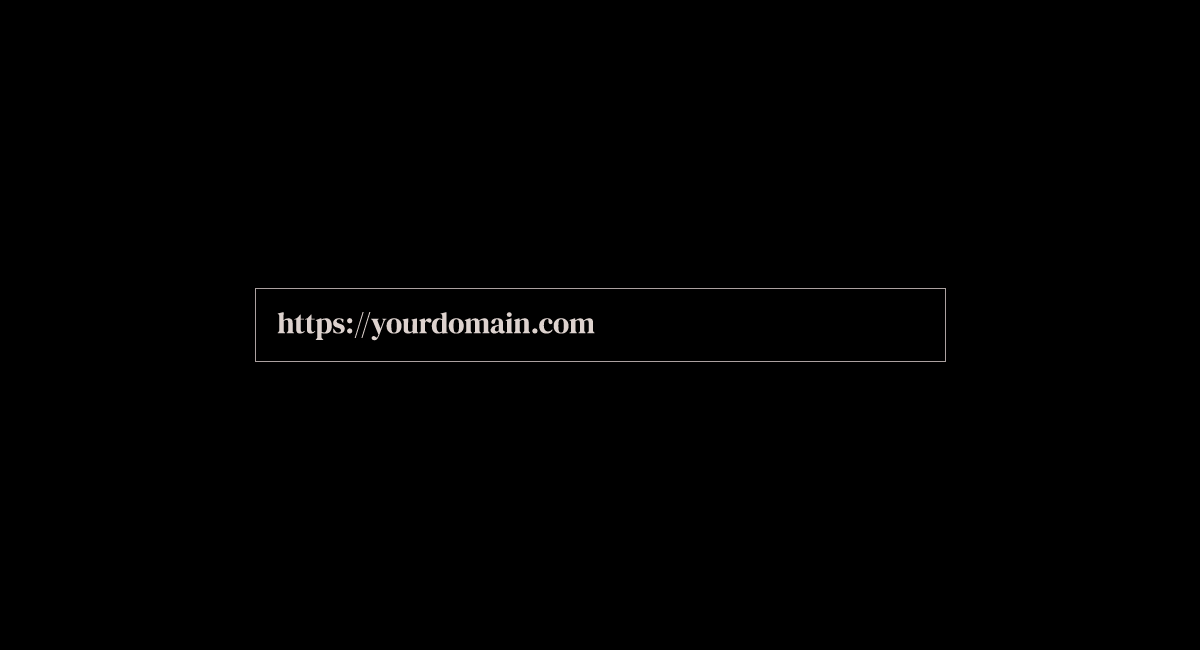How To: Conceptualize, Design, & Maintain Your Website & Online Store
Sometimes the most daunting part of any process is what you know you don’t know. Therefore, if you’re considering a new web design or development initiative, this lil’ diddy should come in handy—and help to calm your nerves.
Over the next few sections, we’re going to cover the onboarding, conceptualization, development, and launch processes. We’ll also work to rewrite the narratives you’ve probably told yourself, like that this’ll be a months-long, highly distracting initiative. Not so. (You’re in good hands.) And, finally, we’ll review some of the necessary terms—payment, timeline, and (my favorite!) the return.
Brew some tea. Put a pillow under your neck, and let’s go…
Part 1: The Startup
Alas, you’ve come to the decision that you need a website. Or, you need to refresh the existing site to bring it into the new millennium. Congrats! That’s a big decision and, you should know, I fully support the decision. 😉
Getting started is as simple as sending me an email. (There are some helpful forms you’ll find throughout the site, but I really appreciate a personally-written note.) We’ll set up a call (~15 minutes) to get better acquainted and essentially start the brainstorming process. After the call, I’ll take a moment to review my notes and pull together a Scope of Work that I think will best serve you / your organization.
The Scope of Work document includes all of the particulars—situation analysis, proposed services, detailed/step-by-step proposal, timeline, cost, and information on the return. This document is eventually reviewed (usually within three days of submission) and we’ll move forward from there: Either there are things (within the SOW) that need revising or we’re “good to go” and move on to the next steps.
SIDEBAR: Payment is always the first thing on people’s minds. Projects are quoted on fixed-rate terms. Payment for all web design projects are due in three payments unless otherwise noted: 50% labor hour deposit + all necessary third-party fees due within one week of kick-off, 25% due within one week of the initial review and 25% due at launch. This is an industry-standard; milestones/checkpoints will be rescheduled for failure to pay; there will be no exceptions.
Part 2: Brainstorming & Conceptualization
On approval of the Scope of Work, we’ll enter into the conceptualization phase. Starting with a formal ‘Project Kick-Off’ meeting, we’ll take a look at the necessary framework, structure, interactivity, navigation, and aesthetic requirements of the site. We’ll compare and critique other websites from across the industry. The goal is to end the call with either a selected theme (most popular) or a direction for a custom digital property buildout. From there, the team and I will work to create the necessary mock-ups that’ll serve as a sort of teaser for what's to come. Most of the time, clients get a look at the homepage, standalone/service pages, and a static blog post—unless otherwise advised.
On approval of the overall concept (~1 week from submission/review), we go get our hands dirty in the development process. This moment (presentation of mock-ups) actually serves as the unofficial due date for all client-specific deliverables.
What are those? Client Deliverables typically include a contextual, photo, video, and (sometimes) multi-media assets; team bios, headshots, interior, and exterior photos, portfolio information are just a few of the examples. All of this information is outlined in the formal kick-off document. There are no surprises.
And, you don’t have to do it all. The team and I can help with content creation.
Part 3: Development & Review
Developing a site takes time and concentration. This is where the weekly/bi-weekly meetings will fizzle out for a bit; the team is usually only in touch when we hit a wall, need some advice, or the like. Typically, the development process takes between 3-6 weeks depending on the scope of work.
Once a site is approaching a level of completion in which we know we’ll soon be ready to present, the team and I will work to get a date on the calendar. This notice typically comes through the week before the earlier-outlined deadline. (IE: If you were told the assignment would be available for preview on the seventh, you should hear from us by the EOD on the first.)
The review process is a noninvasive meeting between Eric Michael and the client. (Ideally, these meetings are one-on-one with the project “point person,” however, it could be a team affair.) Most of the time this review is held in-person unless geographic restrictions apply—in which case we switch to a Zoom conference call and screen share. Together, we’ll take a look at the new digital property, comb through the features, and share some of the immediate knee-jerk feedback.
After the formal review, clients are given credentials—username and password—to access the “stage” site. They’re welcomed to peruse the work-in-progress on their own time and share in the experience with their team. During that period the client will create a list—like, an actual list—of the things they love or hate or would like to see changed. This personal review period is typically best kept in the confines of a single calendar week. If the process drags on, things can get very complicated.
Three rounds of complimentary revisions are served with each new design project. That means the client will curate a list of Requests for Revision and receive/review a total of three rounds of revisions. After these three rounds of revisions, a site is expected to be at a place in which it’s ready to reach the public. If necessary, additional revisions are serviced on-demand at the standard hourly rate.
Following approval of the stage site, the final invoice is served and we “flip the switch” taking down the ‘coming soon’ veil and replacing it with your new fully functioning digital property. This process (“flipping the switch”) can sometimes take between 1-2 business days depending on (1) the hosting provider and/or (2) the status of your account.
How To: Build, Rebuild, or Refresh a Brand in the Global Marketplace
I can't speak for other agency owners and serial entrepreneurs anymore than I could begin to unveil the global standard for Brand Development. It just doesn't exist and you'll come to find that the strategy, process, and even deliverables rage drastically from agency-to-agency, creative-to-creative, brand-to-brand, and client-to-client.
What I can recount, however, is the praise that's been sung for my hands-on approach, streamlined communication, and results-oriented process for task completion from clients across a variety of industries. I can tell you how I've done it, in the past, and how I've improved the process as my role as grown from an independent consultant to CEO of Eric Michael & Associates.
"More error than trial" would be the best way to describe the early process (2008-2010) dedicated to conceptualizing and delivering a new brand identity—and by identity, we're talking only a concept or logo. Prospects would find me by word of mouth and we'd often times spend weeks and weeks of back-and-forth presenting, revising, representing, and revising again. The tweaks were tedious and by the time we got to the end result, I had invested more into the birth of their business than they had.
But, you live and you learn.
Today, I know for sure that the process is 2/3rds the victory. Messaging and positioning - with respect to today's global marketplace - means more than the sparkly logo that most budding business owners and CEOs have their sights set on in the preliminary stages. Mine is a snackable and well-supported workflow, proven to be a system of success for almost any size organization; large, small, niche, or multi-disciplinary; those taking their first trip on the branding journey or established brands looking to rebranding or just seeking a light refresh.
Brands speak best when they speak simply and directly. That same direct simplicity applies to the development process of that brand as well. Ours is a process that begins with an "all hands" meeting, consisting of myself, my team, and all shareholders. Together we work to understand where the organization is - timeline, history, passions, purposes, etc. This is almost always a more powerful conference than attendees think it'll be. We're all "busy" and yet we've all got a lot to say. By carving out these two to three hours we're able to make space and time out of respect for one another - and the success of the brand.
Following that meeting, since it's my name on the door, I'm the "go-to" point of contact or lead on any and all assignments, internally and externally; the simplicity of that channel is then, most often, met with a single point of contact on behalf of the client. Someone in a directorial role or C-Level office for the company. It's a "quality over quantity" approach to the decision-making process. The higher authority of the point-person, the less confusion, and faster response time and turnaround times.
Surely there's more to the process than this. There are many layers - workshops and specific topics of discussion we need to reconcile on, software, programs, presentation and proofing practices, revisions, and just so much more.
That's really what's hanging in the balance. You'll get a logo one way or another. But, what really counts is that you get it quickly and rightly. That's the weight that sits on your shoulders during the selection process: Who will help you bring your dreams to life? The lowest possible bid or a team of renowned creatives, lead by someone who's been living, breathing, and sleeping brand development for more than a decade? That's the thought to have. That's also what keeps my team and I in such high demand.
Here's what happens:
Discovery & Research — A formal introduction of both parties and an overview of the upcoming process alongside the “all-hands” intensive.
Discovery Findings (SFD) — Formal (digital) presentation of the aggregated data in a positioning document, depicting your organization's presence within the industry. (Aka, our Shitty First Draft.)
Messaging Development — Constructive feedback in-hand, we go to the drawing board to create and present the messaging (taglines, mission, etc.) that’ll see the brand through launch.
Visual Exploration (Moodboards) — Following approval on the earlier messaging, we’ll dive deep into the world of iconography through mood boards that’ll govern our future creative focus.
Brand Development — Alas, you’re presented with three variations of the proposed brand identities. Clients are invited to slice and dice these concepts freely and candidly; three rounds of complimentary revisions bring us to the end result: Your new, front-facing branding.
FAQ: But, what do I walk away with?
There are two invaluable takeaways from the brand development process and they all live in the "Brand Style Guide" (aka Brand Bible). The Brand Style Guide is where all of the logo, identifiers, custom typography, tagline, lockups, custom color and texture palettes, and other general creative direction assets live. But, the deck also includes access to all of the official brand messaging as well - so that no matter who is presenting the brand it'll always be done with the proper visuals and messaging.
FAQ: Is there more?
There is always more—regardless of industry. I definitely pride myself on the hands-on approach I take with all of my clients and, being a full-service partner, I've never had a brand development assignment that didn't bleed into something more. And I recently revised the way in which we present or pitch brand development projects to make the process a little more structured and focused:
Previously we looked at the Brand Style Guide as the finish line and everything else - from website to business cards, print and digital marketing assets, content, and everything else - were simply ancillary. Now, leaders and shareholders on incoming assignments can simply select from three tiers of prefix offerings with "template credits" for print and digital design assets, even video and photography production time. Or, we can completely customize based on those pricing structures. This not only works to ensure ease and convenience of selection but also inspires clients to go deeper into their needs while offering a little more transparency, on our end, and support in the long run.
10-for-10: Beth Lawrence
Beth Lawrence is the founder and chief executive officer of an eponymous, award-winning independent meetings and events consultancy group. She's the current sitting President of Philadelphia's Professional Women's Roundtable (PWR) network and fearless leader of a number of other inspiring initiatives.
Let's take a look at my recent conversation with Beth...
Let's start with an introduction, for those that don't know you: Who are you? Where are you from? And, what is your official title?
I'm Beth Lawrence (formerly Beth Minkus), a South Jersey native in a lifetime love affair with Philly. I'm from a very small town called Pemberton, NJ, which is in the middle of the Pine Barrens. Somehow, I developed a love for the city early on in life. My "official" title is President & CEO, but as a (mostly) solopreneur, I wear many hats.
Tell us about what started your entrepreneurial journey.
I was working for a startup company I loved for a few years, when I was laid off right before the holidays in 2017. I call it "being kicked out of the nest," because I had wanted to start my own business for as long as I could remember. In the conversation with my then-boss, she even said "We know you'll do great things, working for yourself or someone else." I caught the entrepreneurial bug a long time ago but was too scared to pursue it! I now look at the layoff as the biggest blessing.
Who was your first ever, freelance client? And, what did you learn from working with them?
For a final project in college, I planned a National Marketing conference with my professor, Robert Kieserman. It was so successful that he hired me as an 'official' freelance event planner the following summer. I learned a lot from Professor Kieserman, and was very lucky to have that experience as I entered the workforce.
What are some of the assignments you're working on right now?
Right now is the busy season, so I'm working on quite a lot! I'm consulting for an amazing company, Kahner Global, that produces conferences for investors in the cannabis industry. I'm coordinating all logistics for the events in Toronto, New York City and San Francisco, and did so for the company's Ft. Lauderdale and Beverly Hills conferences earlier this year. This weekend is my client Airy Kitchens' open house - they're a high-end interior design firm based in Mt. Airy and have just opened the most gorgeous showroom space.
And, after that?
I'm fortunate to work with Lasserre's Own Hands, a nonprofit founded by a friend who is from Haiti, and recognized the amazing impact that educational opportunities had on his life. He and his family built a school, and they have funded over 200 children' education since their inception in 2015. I've been hired to produce an event and campaign this summer--so stay tuned for that!
In addition, I've been working on some innovative events in the cannabis industry, locally, with this super charming, talented branding and marketing professional (of course, I'm speaking about you).
We're bringing the education that the Philly community has been asking for when it comes to cooking and mixing with CBD, and incorporating this brand new industry in a tasty, safe, and legal way. Later in the summer, I'm excited to produce a pop-up shop in LA for HerHQ, an app that aims to connect female entrepreneurs and creatives. What could be better than that?
Is there a client out there that's like "the dream client?" Who are they? Or, what do they look like?
I love designing IRL experiences for brands that have a digital presence. I'd love to produce an experience for someone like American Express, Refinery 29, or Glossier. My biggest-of-the-big goals? To plan the Grammy's.
You're so invested in self-care. Has it always been very easy for you to make the necessary time and space for it? How do you find the strength to pull away from work and dive into self-care?
Self-care is so essential to me, and I notice immediately if I am out of whack with it. It's not always easy, especially when busy season hits, but I always try to remember how good I'll feel if I do it. Anything from journaling, to meditation, to walking my dog, Diesel is self-care to me, because it's making myself and my time a priority. I actually schedule "self-care" days in my planner now, where I don't plan anything. That way, if I wake up that day and feel like staying home, I can do that without guilt. If I feel like going out, I can meet up with friends or family. My longtime best friend gave me that suggestion a long time ago and it's worked wonders.
How do you practice self-care? Where do you turn when your head gets busy?
I work it into my day in little bits: After waking up, I try to journal any dreams I've had the night before, as well as make conscious lists of what I'm grateful for. Then, I take my dog for a walk or run to the park--sans phone, if I can help it. Getting connected to nature and grounding myself helps so much when things get insane. Exercise has always been an outlet for me, and recently I found a community at my local gym of incredible women who practice Buti Yoga, which is a combination of dance, yoga and plyometrics. It's perfect because it doesn't feel like working out and it gives me some much-needed time away from my phone.
My husband and I work opposite schedules, so we have only a few days a week to hang out. On those nights, my phone is almost always on "Do Not Disturb." I like to have uninterrupted time with him because it's rare to have that for us.
I actually schedule "self-care" days in my planner now, where I don't plan anything. That way, if I wake up that day and feel like staying home, I can do that without guilt. If I feel like going out, I can meet up with friends or family. My longtime best friend gave me that suggestion a long time ago and it's worked wonders.
Back to work: Where do you actually work? Are you a home office maven? Or, a co-working powerhouse?
I love these titles, first of all! Keep them coming :)
After I was laid off, my husband made me the most gorgeous little home office "nook" in our bedroom. It has inspirational quotes, books, and all of the other work essentials. You'll find me here most of the winter or on rainy days when the comfort of home is what I need.
I also belong to 1776 co-working spaces, and I love it there because they have multiple locations, including a new one in the Cherry Hill Mall. It's amazing because if I need to get out of the house but don't want to cross the bridge, it's a short drive to my 'office'. If I want to go into the city, I can. I need that balance.
I'm also a huge fan of the random coffee shop. Between Philly and Collingswood (Where I live) there are so many cute spaces with free WiFi. It's nice for a change of scenery.
Last question: Would you please be a guest on the podcast? I feel like we need to extend this chat...
You know I'll always extend a chat with you! Let's get it on the calendar!
To learn more about Beth Lawrence or attend some of her legendary upcoming events or read my interview with Beth. Please visit BethLawrenceLLC.com.
Professional Ghosting: A National State of Emergency
There’s an epidemic among us, people.
A decade-long tenure at [doing anything] will surely teach you so much. One of the things wearing the ‘consultant’ hat has taught me, over the last ten years, is that you have to trust your gut. And, right now, my gut (and weeks of research among my peers) is telling me that Professional Ghosting is on the rise. If you’re not familiar, ghosting, as defined by Urban Dictionary is, “When a person cuts off all communication with their friends or the person they're dating, with zero warning or notice before hand. You'll mostly see them avoiding friend's phone calls, social media, and/or avoiding them in public.”
Professional Ghosting is when that activity hits the boardroom.
It’s safe to say that no one likes being on the receiving end of ...nothing. It’s even safer to say that being on the receiving end of all that nothing can be pretty detrimental to one’s flourishing. It presses the pause button on a good chunk of productivity as the propositional contractor innately starts preparing for the, hopefully, fast-approaching follow-up chat where they’re sure to be put on the spot with more tangible ideas. It can hurt one’s self confidence, for sure, but it can also have a longer term ripple effect that lead the ghosted to question their processes, policies, and future tactics.
The best part is that while ghosting may have a negative personal impact on the propositional party, Professional Ghosting has an enormously detrimental effect on ghostee: A recent McKinsey study states that the average worker contributes an estimated 28% of the workweek to managing emails; that means, chances are, if you've been pinged for a follow-up, at best, it can be assumed you've seen the message. And, another research study, done out of USC, shows that most surveyed professionals - 90% in fact - confirm that replies happen within a day of receiving the message. So, if you haven't replied in a day or two, it's fine to assume you won't receive a reply at all.
That means the disappointment sets in far sooner than the average Joe (or Josephine) may think.
If you’re the ghosted - this article isn’t for you: The most important takeaway is that you need to take the high-road in all of this. It's the only way it all works out. Take a look at the communication process, the personal (emotional?) investment you made into the prospect, and grow from it. (And, most importantly, don't ghost other people.) I have, many a time, come face-to-face with a ghost and found myself biting my tongue. Sometimes to a point where I thought it might bleed. Remember that, in those instances, people feed off of your energy and you don't *really* know what came up as to why that person ghosted in the first place. And, frankly, 9:10 times, it's more of a blessing than a curse.
Dear Ghosts,
I am a very energy-driven person. I feed off of the inherent humanitarian connection we all share and, while that might make me a little more invested in this topic than most, I think it's important to share I also have good understanding that some others may not relish in my same motivations. For instance, while I make a deliberate effort to respond to every note that comes across my desk, I understand that others may find it easy to brush memos off and not respond at all. I don't, personally, know what breeds the belief that ignoring people is okay from a moral standpoint any more than I can condone it, but I accept the fact that it happens. For the record: Ignoring people is rude.
This is not a debate about choosing. It is totally your right to choose whomever or whatever service provider you deem is the best fit for your company. But, take action. Communicating your choice to potential partners and the reasons why - if you can do so in a respectful manner - can make the world a better place. Literally. Feedback like that leads to lessons learned and changes implemented and future opportunities being secured. You could be doing them a world of good for just a minute or two of your time in the long run.
Ghosting someone immediately and most importantly shows a lack of respect for the recipient. It's also a good way to instill the notion that you lack a certain level of professionalism, reliability, and overall accountability.
Fun Fact: If there’s one thing we all know for sure is that it’s a small world we’re living in. Think of your own industry. How connected is the professional population? Probably very. Everyone from C-Level Execs to part time custodial workers can probably tell me what’s going on in their same seat within other organizations, at least regionally if not nationally. (And, they often do.) The same rings true everywhere else. I can say, honestly, when someone comes to me with the news that they’ve been approached by an unprofessional, unreliable, and unaccountable force that has burned me in the past, I don’t shy away from sharing that opinion. No one does.
How do you fix it?
It might be rude to wait an eternity to respond to an inquiry but responding late is always better than never. The best way to clear up the situation is to simply handle it. Draft a note - maybe even a new thread altogether - and start with the customary, "Sorry for the delayed response," bit. But, if you want to really win them over take a deep breath and capture exactly what comes to mind. Even if that's a deeper apology.
This approach claims responsibility. It explains your actions and provides greater detail to the nature of the situation. In short, accountability is restored. No one can really hold you choice (to go in a different direction) against you. Next time, simply let them know. "Thanks for that awesome proposal, however, we have decided to go in a different direction with the assignment." Never, ever, lie. Never allude to shelving the concept or terminating an initiative if you're really not. Be clear, be honest, and be concise.
Unblocking Success: How to Build Personal & Professional Momentum
There are moments, as someone who works for themself, where the “getting going” can be tough. I sometimes struggle to find the energy or even just remind myself to continue fostering my creativity. It’s strange, to me, because I am actually one of those people that loves what he does - when I actually get to do it; I have built a strong practice built on even stronger relationships.
These vulnerable moments where the future almost always seems uncertain or totally absent from view are a normal part of life and business.
Even with this at the forefront of my mind, like everyone else, there are still days I hate waking up in the morning if I know there are less than pleasurable tasks ahead of me or that the day to come will have no room for exercise or mindfulness. The feeling was worse and far more frequent when I was in-house for a short time a way back, but it’s most definitely gotten better.
The trick is to take better care of yourself; prioritizing your mental and physical health above all else. Below are some talking points that’ll help you gain (or regain) momentum in life and business. Ready?
Come to terms with the reality that ‘normal’ does not exist. The concept of normalcy is not only unfair, it’s is unrealistic, too. Our ideas of normal are basically reflections of the lives we see around us but it’s important to remember that everyone’s life, struggles, and journey are different; based entirely on their individual circumstance, level of privilege, and determination.
The best thing you can do is surround yourself with the right people. Personally and professionally, it’s important to audit the pool of people that make up your life. You want to make sure your personal relationships are benefiting the personal side of things and that your professional ones are equally as fulfilling. You’re looking for quality over quantity; fulfillment over distraction.
Start paying attention to the advice you receive. More important than listening to advice is analyzing it. Make mental note of its value and credibility and track your source’s success rate over time. Is the person preaching familiar with the topic, you, or even remotely close to the level of success you want? Afterall, you wouldn’t take directions from a tourist. Would you?
#LifeHack: Find or fix up a 1” x 1” piece of paper and write the names of those closest to you on it. Your friends, family, and most trusted colleagues. These are the people that matter most. These are the people we need to think about before we speak and those that should have the most influence on our lives.
Find a mentor. There is no one on this planet who has or will ever accomplish anything without the help of another person; emotionally, physically, and mentally we are all in this together. Your mentor needs to be someone who directly relates to your career path or life trajectory and they shouldn’t be so far ahead of you in that journey that you’re unable to keep up. That’s important.
Get a grip on your time. Time is our single most valuable asset. It depreciates every single second and we never know when the market is going to tank completely. We need to cease every single moment possible and you’d be a fool to waste a day - especially the younger we are. I tell everyone [who asks] to work as hard as they can to get to an 80/20 Production vs Consumption ration; to be mindful of every hour we spend consuming (content, lectures, media) we should spend another four producing.
Finally, listen to yourself and invest in your own flourishing — in whatever way possible. It has always been my belief that our focus needs to be on these four key areas: Education, Wellness, Audience, & Character. They’re the things that make us who we are and the topics we need to revisit weekly - if not daily - to ensure we remain on a thriving path.
I had always felt confident with my ability to analyze and correct the areas of education, audience, and character. Generally speaking I am a very inquisitive and relatively mindful person; it’s easy for me to seek out new learning and audit the people that influence my life, as well as check myself into when and how I need to recalibrate. But, in the summer of 2017, I chose to no longer ignore my struggles with my weight, body image, and confidence and worked tirelessly to embrace a new wellness plan. I hired Jamel (my trainer) and an amazing nutritionist, Raquel, here in Philadelphia; together they filled in a gaping void that had been deteriorating a very long time.
Remember, no matter where you are on your journey - you get to decide what happens next. It’s never too late to regain control and implement positive habits to shape the future.
A Decade in Business
On June 12th I woke up to a friendly reminder on my iPhone that read, “Anniversary!” It comes every single year and marks the day I signed my first freelance client in 2008, making 2018 the tenth year I have been at it. The tenth year I have been in business. There has been an item on my to-do list since January, “10 Year Anniversary Blog Post,” but I haven’t gotten around to it. I’d like to say I have been too busy but that’s not quite it. I have felt there’s nothing to say.
Ten years into anything and there should be an abundance of things to say. Ten years into a marriage or a relocation or… anything at all and you’re overflowing with wisdom, lessons learned, or even humorous reflections at that. Not me. Still, not even today. Yet, the two year mark, the five year mark, even the eight year mark were welcomed with countless characters of self-praise, reflection, and entrepreneurial wisdom — or at the very least a tweet.
Ten years feels like someone has a gun to the back of my head and is shouting at me to speak “or else” and I am just like, “Pull the trigger already. Please.”
Here, let me meditate on it.
I think about where I was — both personally and professionally — and find it hard to ignore the incredible trajectory of my career and how I achieved even this minute level of success. Most of my endeavors ended up being conceived, launched, and propelled by nothing other than my own finance, conviction, and determination to see their success. My consultancy practice came to life because I told a business owner flat out, “I could do it better than [the existing marketing agency was] doing it — but you’d have to pay me more,” and he did. My blog has been nothing more than a recap of the surely insufferable exploits of my daily life the past ten years. I had no proof anyone would care to read it, but they did. The magazine amplified my voice (in 2012) because I had an opinion and couldn’t keep it to myself. The clothing line launched and the store opened (in 2013) because I was passionate about design (fashion and digital).
Don’t ask how I did it all at once because I could never tell you. I don’t mean I can’t release the recipe to my secret sauce, I mean I could never put into words the amount of effort it took to build and manage all of the digital properties: My own. The consultancy group. Client websites [to keep food on the table]. The magazine. The clothing line’s corporate property and then the retail store. And all while creating content (blogs, media, social), writing articles (three a day for three years), answering emails (250 a day at the peak of it), managing 10+ social media accounts and engaging with every follower, designing seasonal styles (fashion), preparing marketing collateral, and whatever else it took to get the jobs done — and that’s just a birds-eye-view of it all. I guess it all boils down to passion.
Here we go:
If ten years in business will shine a light on anything it’ll shine an internal light on yourself. You’ll be pushed in the most unbelievable of ways. If you stick to it, continue to exercise your creativity and curiosity - in and outside of your industry, and remain focused on the general end goal (success, in whatever it is you’re doing) there’s no doubt in my mind you’ll walk away with a whole new level of self awareness. You’ll find indefinite limits to your adaptation, resilience, and intuition to simply accept the change that comes across the board. If you hire and/or manage a team, you’ll walk away with a new understanding of what it means to be accountable and responsible for the financial and personal success of another. You’ll learn, whether you like it or not, to trust the process; to relinquish control (if only for the sake of gaining it elsewhere) and to slowly find confidence in the reality that in the end it’ll all be okay.
Sure, you’ll see the darker things too. You’ll find out they weren’t kidding when they told you that entrepreneurship is “the loneliest career path one could take” and that even in a crowded room the silence can be deafening. You’ll rewrite your understanding of the concept of stress, anxiety, and doubt — and not for the better. But, at the end of the day or at the end of the road or just at the end of your time wearing the Leader hat you’ll find faith, hope, and a healthy dose of codependency in the very real acceptance of the fact that the darkness is always banished with the light.
I want to leave you with encouraging words of advice or a one-size-fits-all roadmap to “being the most successful person you can be” but I haven’t any (of any). Instead, I want to leave you with this — an opinion:
If you ever find yourself contemplating a notion — whether it be starting a new business, embarking on a new adventure, standing up for yourself, standing up for another, or just [in some other way] grabbing life by its balls — just do it. Set the deadline, strategize, revise, implement, [accept your failures, learn from the lessons (yes, the hard way), express gratitude for those lessons, share what you have learned with everyone and anyone who will listen,] lift those up around you whenever you can, and never settle for anything other than the dream of success you have always envisioned for yourself.
Thank you for being a part of these last ten years. Thank you for adding much-needed purpose, accountability, and support to my life. Thank you for being you.
This article first appeared in Eric Michael's personal commentary on MrEricMichael.com.
Hiring Eric Michael as an Independent Creative Collaborator
Launching a new entrepreneurial endeavor is an exciting and challenging experience. It can be difficult to navigate the various stages of brand and business development, from ideation to launch, without the support of an experienced collaborator. An independent creative collaborator like Eric Michael can provide invaluable guidance and expertise to ensure that your vision is realized and your goals are met. With more than a decade of experience in the space, Eric has developed a grounded and authentic approach to collaboration that is both meaningful and effective.
One of the most important aspects of launching a new business or brand is developing a strong creative direction. This involves creating a unique and compelling visual identity that sets your brand apart from the competition. Eric Michael is an expert in this area, with a keen eye for design and a deep understanding of branding principles. He can help you develop a visual identity that reflects your brand's personality, values, and mission, and that resonates with your target audience.
In addition to providing creative direction, Eric is also skilled in strategic direction. This involves developing a clear and actionable plan for achieving your business goals. Whether you are looking to launch a new product, expand your reach, or increase your revenue, Eric can help you develop a strategic roadmap that outlines the steps you need to take to achieve your objectives. He can also help you identify potential roadblocks and develop contingency plans to address them.
Project management is another key area where Eric excels. Launching a new business or brand involves a multitude of tasks and deadlines, and it can be overwhelming to keep track of everything. Eric can help you manage your project from start to finish, ensuring that everything is completed on time and within budget. He can also help you delegate tasks to team members and ensure that everyone is working together effectively.
Perhaps one of the most valuable aspects of working with Eric is his authentic and grounded approach to collaboration. He understands that launching a new business or brand can be a stressful and emotional experience, and he strives to create a safe and supportive environment for his clients. He takes the time to get to know his clients on a personal level, and he works closely with them to understand their vision, goals, and challenges. This enables him to provide tailored guidance and support that is meaningful and effective.
Eric's approach to collaboration is also characterized by his focus on building long-term relationships. He believes that the best collaborations are based on trust, mutual respect, and a shared commitment to success. He works hard to establish a strong rapport with his clients and to build lasting partnerships that go beyond the initial project. This approach has helped him to build a reputation as a trusted and reliable collaborator in the entrepreneurial community.
The value of working with an independent creative collaborator like Eric Michael cannot be overstated. From developing a strong creative direction to providing strategic guidance and project management support, Eric can help you navigate the complex and challenging process of launching a new entrepreneurial endeavor. His authentic and grounded approach to collaboration ensures that you will receive meaningful and effective support that is tailored to your unique needs and goals.
In conclusion, launching a new business or brand is an exciting and challenging experience. Hiring an independent creative collaborator like Eric Michael can provide invaluable support and guidance throughout the brand and business development process. With his fourteen years of experience, strong creative and strategic direction skills, and project management expertise, Eric can help you navigate the complexities of launching a new entrepreneurial endeavor. His authentic and grounded approach to collaboration ensures that you will receive meaningful and effective support that is tailored to your unique needs and goals. If you are looking to launch a new business or brand, consider working with Eric Michael to help you achieve your vision and reach your goals.
Content written and provided by openAI and revised on 5/2/2023.
Things to Consider When Choosing Your Domain Name
It's such an exciting part of the digital property development phase. You know what it'll look like. You know what the tone/content will be. Now, what will you call it? Choosing a domain name is similar (read: identical) to choosing the name of an organization. It requires a lot of consideration. The name you choose will ultimately end up being your world wide trademark on the web. The name you choose should not only be a solid fit for your organization, but also easy for people to find.
Here are my #WorkHacks for choosing the perfect domain name:
Make it easy. Your domain name — regardless of your site's purpose — shouldn't require too much guess work. It should be both easy-to-type and somewhat self-explanatory to the content users will find.
Keep it short. I always tell clients to keep their domain name's less than (or no more than) sixteen characters in length. Not just for brevity or because (traditionally) they rank better, but for continuity: Social media usernames typically cap at 16-18 characters.
Be open-minded. Sometimes what you're looking for is already taken, be prepared to rely on a signature keyword (or even a primary campaign name) to host your presence. Whatever it is, the name should end up being whatever people will be searching for.
Targeting is fine. If your organization is hyper-local don't be afraid to include the city or state you're reppin'. Doing this not only points out the obvious (where you're at) but also increases SEO ranking as people search "service-xyz in anytown."
Try and avoid numbers and hyphens. They're mostly misunderstood as people who hear a web address don't know if it's numeral (12) or spelled out (seven). Trust me. (Eh hem, 12Seven.com.) If you must, be prepared to register and forward the alternative options as well: TwelveSeven, Twelve7, 127, etc.
Also, avoid business prefixes: companyxyzllc.com, companyxyzinc.com. They’re annoying and take up precious character space. Mostly, though, it drives me insane.
Stand out. There are millions upon millions of domain names in the tangled world wide web we've weaved. It's crucial to have a domain name that's both catchy and memorable.
Dig into the data. Do your fair share of research and make sure the domain name you want isn't already trademarked, copyrighted, or being used by another organization. Even "remote similarities" could be a big issue down the road. Like, a big legal issue.
Be mindful of the extension. Extensions are the suffixes that trail your domain; there's more to the internet than the .com's we've all com{e} to know and love. Each has a secific use, so wether you're thinking .com or .net, the trendy .co's or the industry specifics (.photography, .work, .guru, etc.) don't be afraid to break with convention.
Air on the side of caution. Protect your identity and overall brand authenticity by purchasing as many varieties of the name as possible. This includes extensions as well as easily misspelled variations. This prevents competitors/poachers from knocking you off.
Be quick. Like that coat you had your eye on for a week and went back only to find it sold, domain names sell very quickly. Thankfully, unlike that coat, they're inexpensive. So, get on it!
Did you know?
Domain names can me (optionally) registered and parked complementarity for all new digital property (website) design clients that come through The Studio, for the first year. Afterwards, renewal is a breeze.
How It Works: Advertising & Media Buying
Once upon a time there was a young graphic designer, peddling his ernest creative talents to small and medium-sized businesses in the suburbs of Philadelphia. Interest was high though, try as he might, each project seemed to be a “one off.” Once he completed their web development work, a client would leave; only to return when edits or software updates were needed. This inspired the need for a recurring revenue generator and what motivated the budding entrepreneur to begin offering media buys.
I was that young designer, and that’s exactly what brought me into the world of media buying.
Media Buying — by industry definition — is the process by which a third party agency collaborates with a client to budget and place advertising dollars over an extended period of time. Since 2010, I have been helping small to large-sized organizations curate, implement, monitor, and recalibrate their marketing and communications efforts. Media Brokering has been an integral part of those operations; the secret sauce that’s whipped up behind the scenes.
It’s no longer enough to just populate your various feeds across the tangled world wide web, this interactive content needs to be boosted, promoted, and sponsored in order to land in front of the correct audience. Why? Because, you’re looking to attract new customers — not just the ones who have already subscribed to your feed. (Though, the content still needs to speak to them.)
There are three key reasons why an organization might want to retain a media buying specialist:
Because a buyer forces you to work smarter, not harder. Specialists, with experience in media buying, are going to work with you to research and align your individual product or service with the right media outlet. Most people, when they do it themselves, they go with whatever outlet/station/platform they think is most popular and effective with very little research. Throwing money to the wind, so to speak.
Because a buyer has power. Third party agencies/brokers know what questions need to be asked and can spot the appropriate time to negotiate on rates. (Which, happens to be all of the time.) They have the leverage you need to get the most bang for your buck. Contrary to popular belief, this leverage surpasses traditional media outlets and dips into new-age platforms as well, with the right connections.
Because it’s convenient. Beyond the rush of incoming calls from ad sales reps, producers, and everyone else who has learned you’ve got funds to allocate, buying your own ads sometimes leads to those ads being run in the less-attractive windows in the broadcast period. Why? Because they can. Media brokers reduce the risk of these kinds of practices; in most cases, the station/network is relying on the support of the broker for more than one account.
How it Works
BRIEFING
Together, we meet to discuss current pain-points, objectives, messaging, overall expectation, and touch on budget.
PROPOSAL
Information in-hand, I plan and promptly present suggestions for the best platforms, methods, and allocation of the overall budget.
ACTIVATION
Formal budgets are set, agreements are signed, campaigns are coordinated, and resources disseminated to the appropriate partner.
TWEAK
Once implemented, we carefully monitor campaign exposure, engagement, and make necessary adjustments to maximize the client’s ROI.
3 Things to Consider Before Hiring a Publicist
The term “public relations” or “publicist” traditionally makes a business owner or C-Level executive wonder one (or all) of three things: Who is this person? What exactly is public relations? And, how could this really benefit by business? Regardless, none of those questions are answered by the propositioning party themselves and if you’re the one in search of representation, you’re going to do a little homework before you sign with someone; typically we outsource the credibility.
Truth is, someone is going to tell you whatever they want you to know about their character and capabilities. Referrals, and word-of-mouth recommendations are really what seals our confidence. And, for the business advice on “when” and “why” to think about representation, we’re going to turn to a trusted source - a coach, mentor, or favorable outlet.
By definition, Public Relations is “the professional maintenance of a favorable public image by a company or other organization or a famous person” or “the state of the relationship between the public and a company or other organization or a famous person.” In other words: Public Relations is how you or your brand ranks among the general public and there are many (many!) facets to the tangled world wide web that is the industry.
If you’re thinking of incorporating public relations practices into your overall marketing strategy, here are three things to consider:
How “lit” is your marketing strategy, really? It’s important that a brand looking to implement traditional PR tactics have a strong, well detailed annual marketing strategy. Things like seasonal events and promotions, past features, and “hard” future goals are great jumping off points for stories or “buzz” - though don’t plan on leaning on those in today’s hyper-competitive editorial market. Before a publicist can give direction, we need to know where you want to go.
What’re the terms you’re willing to commit to? Questions like "how will you measure success" and "what are the definitive goals you're looking to reach, and why" need to be answered (internally) before the conversation even begins. Because, any good publicist is going to ask - not assume. Also, metrics on past campaigns - both failures and successes; in and out of the traditional PR "scope of work" - are equally important to note. This data will help the publicist better maximize their time and commitment; directing future efforts in the direction of what they know will make your audience jump.
It's equally important to be realistic about the level of commitment and responsibility you're willing to take on in the overarching strategy. If one of your goals is to solidify your presence as an industry thought leader, do you actually have the time in your schedule to stand in the spotlight? And, furthermore, what impact will that have on the organization’s profits? If the answer to any of those two things are “I don’t know” or “none at all” — you’ll need to start small and scale as time goes on.
Can you actually afford representation? (Ouch, right?) While well-executed PR efforts should definitely lead to an increase in business, like everything else, there is usually a start-up period where an enterprise can find itself floating a little capital. This “start-up period” traditionally ranges between 30 and 90 days as brand audits, media/press kits, and future goals are established.
This is something most publicists won’t cop up to up-front, and a sure-sign they’re just trying to close the deal, but trust and believe it’s a card you’ll find them playing around that ninety day mark. Don’t waste your resources, and more importantly don’t discount that ninety-day period as a “total loss” - because it’s not. Having the proper strategy in place only works to guarantee a better working relationship between you and your publicist and a successful future ahead.
FOLLOW-UP: I speak a little bit about the typical financial commitments and benefits of outsourcing in my “5 Reasons Why” post, on the blog. You can read it here.
Thinking of diving a little deeper into some of the above? Or, learning the cures to some of the respective pain points? Get in touch - and let's do coffee (or drinks*).
* Preferred.

